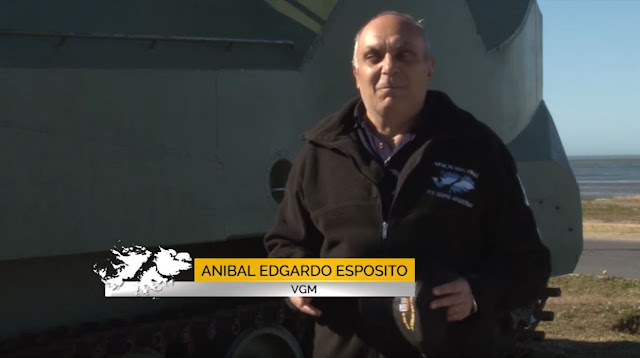Blindados en Malvinas (Armor in the Falklands) by Ricardo Sigal Fogliani
Ricardo Sigal Fogliani is the author of Blindados Argentinos, de Uruguay y Paraguay (Ayer y Hoy Ediciones, 1997), one of the books cited by Phillips in his attempt to prove that VAO #17 was present in the Argentine Landing. His new book, Blindados en Malvinas (Grupo Argentinidad, 2021), provides a comprehensive account of the role of armored vehicles on both sides of the conflict.
On this occasion, he interviewed Argentine and British veterans, including Major NCO Aníbal Espósito, driver of VAO #07; Main Corporal Raúl Pérez, driver of VAO #19; Colonel (R) Gustavo Tamaño, Section Chief of Panhard Detachment; and Colonel (R) Mark Coreth of the B Squadron, Blues & Royals Regiment.
Indubitably, many years of experience has paid off since Blindados Argentinos, as he told me via e-mail on January 2021:
"The book to which you refer [Blindados Argentinos] was the first of my books, "Blindados en Malvinas" that will be published this year, will be the seventh.
When I wrote the first book, almost 25 years ago, I did not have the experience that I have now. As it was my first book, perhaps I did not give importance to the "galley proof", nowadays I reread it before printing six and even seven times, until no error appears. At the time I thought it was the publisher's responsibility. In that modest first book with which I debuted as a military historian, its edition was paid for with a great financial effort by myself, and in it I made it clear that all the VAOs (LVTP-7) and the VARs (LARC V) returned after the actions of the landing of April 2."
Mr. Fogliani included more details about the preparations of the vehicles prior to the Landing, correcting the previous confusion about the status of VAO #17, and adding a crucial account from Aníbal Espósito on page 27:
"The VAO 17 that was impossible to recover, we gutted it completely and took out the spare parts and everything that we could use..."
Fogliani also decided to address directly the hypothesis of The First Casualty, dedicating two pages to mention the rumored incidents of the destruction of an Amtrac, the sinking of a Landing Craft, and the cremation of bodies on Tussac island, to conclude with the following paragraph:
"All these versions are the product of an intentional inventiveness, to obscure the Argentine success achieved with Operation Rosario of taking the islands without producing enemy casualties and at a minimum cost of their own, taking advantage of the international discredit that the Military Junta that governed Argentina had in that era. It was not necessary to invent stories of this type to "enhance" the resistance of the English soldiers, who had a courageous behavior according to the great difference in troops they had to face."
It's very touching that both men have established a friendship thanks to this book, and they hope to meet in person in the future.
I'll paraphrase Colonel Julio Casaretto Bardales from the Peruvian Army:
"... I want to highlight the magnificent research work of Ricardo Sigal Fogliani, which not only abounds in detailed technical descriptions of the tactical use of tanks on the battlefield; the Argentine and British armored vehicles deployed in operations, but the most important thing is the account of the human side of the operations: the crews of both forces, who expended great initiative and professionalism, preparing, repairing and maintaining their vehicles in difficult conditions of the campaign. But above all, the great courage and heroism shown in combat, defending the ideals and objectives of their nations even with their life."
I felt quite honored when Mr. Fogliani invited me to a small reunion to launch his book, and he had the amiability to sign it, together with Col. Tamaño. It was a great afternoon, learning from extremely knowledgeable people and a veteran with great humility, I'm truly grateful for their deference.







